Picking Apples
The fall months of October and November have come and gone without my one desire being met of capturing the Milky Way during one of the new moons during those months. I’m beginning to realize that I must, indeed, plan in detail and in advance to get local shots (i.e., in Rhode Island) with local foreground objects (like light houses) in these Milky Way dreams.
I had tried to substitute for the above lack of opportunities by getting to know my State of Rhode Island better. I chose the northern part of the State since it is one I do not know and one which has remained somewhat resistant to modern changes. This part of Rhode Island is definitely historical and has beautiful rolling country sides of farms and orchards, with small villages and quaint farmhouses. There are many apple orchards and this currently posted shot of a farmhouse sits among one of these orchards.
The shot was taken on a windy, coolish fall day in the afternoon with the low angled sun behind me. The house was situated on one of the corners of a “busy” intersection. There definitely was not much traffic, but it still required being aware and off the road when traffic did show up. I parked at an apple orchard barn and asked the person there if I could park and shoot around the area (not going on the property, but simply shooting from the roadside). He stated there would be no problem. I had taken several hand held shots, but decided I’d like to use my tripod to make use of some of my neutral density filters to diminish the bright light of the angled sun. Before I could fully extend my tripod legs, the gentleman who previously agreed to let me shoot freely, now stated he did not want me shooting with my tripod because the owner of the house I was shooting might not like it (the owner was not on good terms with the gentleman with whom I was talking). I stated I understood, packed up my gear and moved on.
What the above experience has reinforced in me is that shooting photography is like picking apples. There are apples which you are allowed to pick and there are apple which the grower does not want you to pick. Furthermore, in the wider scope of photography, we have to pick and choose what apples to pick to make the best pie (aka photograph).
The above photo was taken with a Canon 5 DS, EF24-105mm @ 45mm, f/4L IS USM lens, f/10, 1/250″, 160 ISO, using DxO Optics Pro 11 in post processing, in addition to Adobe Camera Raw, PS CC (2018), a gradient map and Nik Color Efex Pro.
Staying in Shape
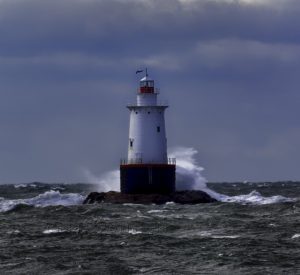 A few days ago I had a most frustrating experience photographically, one which I have not had in many decades—I could not record the shot(s) onto my CF Card (it was full).
A few days ago I had a most frustrating experience photographically, one which I have not had in many decades—I could not record the shot(s) onto my CF Card (it was full).
The last time this ever happened to me was when I was shooting with actual photographic film (Kodak)—I had none in the camera.
The circumstances were thus: I had been hoping to get photos of the New England Patriots Plane taking off with the team on it to one of their games. I live very near T.F.Green Airport which is where the Patriots Plane is stored and from which the team departs to away games.
As luck would have it I was driving by the airport and noticed the plane loading with gear and players. I hurried home to get my camera and arrive at a City park right next to the airport which had a vantage point (not an optimal one, but acceptable for when the plane actually immediately lifts off) where I could shoot unimpeded. I was elated. But drawbacks were: it was cold with a northwest wind chill making it below freezing, and I was shooting into the setting sun.
Nonetheless, I figured that when the plane became airborne I would get some great clean shots. I was imposition and freezing (with numb fingers), the plane was lifting off a few yards from me, and the camera suddenly became unresponsive. All I could do is watch the Patriots plane fly beautifully off into the sunset without my glorious captured photographs of it.
My CF Card was full. I knew I had many photos on the card but was remiss in not deleting them.
The lesson I learned is you can not forget the basics of being prepared for the circumstances of shooting fleeting moments. Whether it’s weather, gear, knowing the circumstances, or things as lens cleaners, batteries, recording media, whatever. Attention to details means everything.
The posted photo is of Sakonnet Point Lighthouse, RI, on a blustery day in November, 2016, where again I was not prepared, since because of the wind, I was not able to get as many clear photos due to camera shake. I was on a tripod and about 1.5 feet off the ground but nonetheless, I was not prepared. The photo was taken with a Canon 5 DS, EF70-200mm f/4L IS USM lens @ 185mm, f22,1/80″, -0/67, ISO100, post processing with DxO Optics Pro 11, Adobe Camera Raw, using a gradient map in Photoshop, and Nik Color Efex Pro.
Meeting the Challenge
- At October 28, 2017
- By Firstmate
- In Canon EOS 5DS, DxO Optics Pro, Nik Software, RI
 0
0
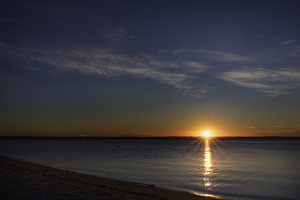 My recent trip to Hawaii continued to strengthen within me the adventure that photography is. Of course, for some individuals it is all consuming and it is a job unto itself, which is quite fine and I am grateful for these people for I learn from them. But for me the adventure comes in fits and spurts where photography fits in the spaces left void when other life events are not pressing.
My recent trip to Hawaii continued to strengthen within me the adventure that photography is. Of course, for some individuals it is all consuming and it is a job unto itself, which is quite fine and I am grateful for these people for I learn from them. But for me the adventure comes in fits and spurts where photography fits in the spaces left void when other life events are not pressing.
That is not to say photography is not far from my thinking and desires, for I am constantly planning and trying to make photography more a central player. Be that as it may, I have been forcing myself to give photography more of its due.
Recently, this has taken more form for me in that I have made two major lens purchases—a Canon EF16-35mm f/4L IS USM lens and a Canon EF100-400mm f/4.5-5.6L IS II USM lens. Both of these lens were at very appealing prices and I grabbed the opportunity to do so, even though it put some financial pressure on me to purchase them. Those purchases have forced me to make opportunities to use these lens, and I have been doing so over the last two months.
First of all, I will say I am not disappointed in my decision to makes these lens purchases, and secondly these lens have performed marvelously. They have stimulated me to think creatively, especially in how best to frame and use them.
Also, I must say that I am feeling very comfortable in shooting manually in many diverse situations as well as using my camera’s settings to maximize the best photo capture possible, and doing this dynamically, i.e., adjusting shooting on the changing conditions and needs at hand.
The currently posted photo is of Conimicut Point Light House at sunrise this past September. I was not content with the angling of this shot but I had no options based on accessibility. The photo was taken with a Canon 5DS, EF16-35mm f/4L IS USM @ 35mm, f/22, 1/4/”, ISO 50, used a six stop neutral density filter, post processed using DxO Optics Pro 11, Adobe Camera Raw, PS Gradient Map, and Nik Color Efex Pro.
Implied Style
- At October 12, 2017
- By Firstmate
- In Canon EOS 5DS, DxO Optics Pro, Nik Software, RI
 0
0
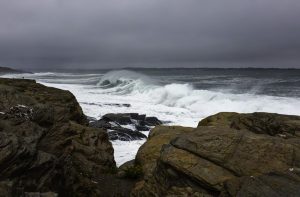 After a protracted journey of many photographs, some clarity is coming to me regarding how I shoot photographs. Not necessarily what I shoot, but how I shoot.
After a protracted journey of many photographs, some clarity is coming to me regarding how I shoot photographs. Not necessarily what I shoot, but how I shoot.
It appears that I gauge or shape my shooting of whatever is before me to include implied motion.
Obviously, not only is content involved but also form of how a shot is framed or constructed.
What I find fascinating is that subconsciously I do this.
I will leave it at that for now.
The posted shot is from Beaver Tail, Jamestown, RI during a tropical storm Jose off the coast. It was shot using a Canon 5 DS, EF16-35mm f/4L IS USM @ 35mm, f/14, 1/250, ISO 500, post processing using DxO Optics Pro 11, Adobe Canon Raw, a gradient map using Photoshop CC (2017), and Nik Color Efex Pro.
Smell the Roses
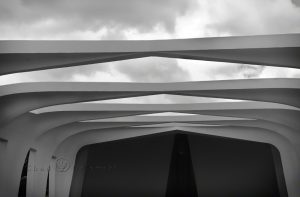 While no posts were forthcoming in July, I had been busy going through my 3000+ images from the Hawaii shoot. Admittedly, while I did reach the 1% keeper goal of about 30-40 photos, this process in itself created challenges within me to see things I had not considered or even forgot when I was actually taking the said photo “keepers.” In other words, so much time and so many different scenes have come in between the actual shots and then the processing of these shots that I had forgotten many of the details. Note: the major ones I remembered, but the nuances to many shots were lost to memory. Even while I was taking these many shots in Hawaii I wish I had a way to record along with the photos themselves (a tag, if you will) what I was actually thinking or trying to do at the time.
While no posts were forthcoming in July, I had been busy going through my 3000+ images from the Hawaii shoot. Admittedly, while I did reach the 1% keeper goal of about 30-40 photos, this process in itself created challenges within me to see things I had not considered or even forgot when I was actually taking the said photo “keepers.” In other words, so much time and so many different scenes have come in between the actual shots and then the processing of these shots that I had forgotten many of the details. Note: the major ones I remembered, but the nuances to many shots were lost to memory. Even while I was taking these many shots in Hawaii I wish I had a way to record along with the photos themselves (a tag, if you will) what I was actually thinking or trying to do at the time.
That being said, I was forced in hindsight to find another way to accomplish the above. What I decided to do was allow myself to “Be” with the shot (I know this sounds corny and hackneyed); in other words to stop and “smell the roses.” If there was a shot to begin with, then I should be able to recover it within perceptual memory.
Honestly, this is not an easy process, but it does work.
The current photo to this post is of the USS Arizona Memorial looking upward. I’ve always felt a reverence for Pearl Harbor and the lives that were lost. I felt privileged to be able to visit this site, but upon arriving I found that the sheer number of visitors actually detracted from the solemnity of the site. This is not to cast aspersions on anyone about the actual memorial but it was difficult to find peace and reflection with so many visitors coming and going. The positive is that Americans still care and feel deeply about this event.
There was definitely a solemnity to the Harbor and I tried to capture it photographically. One way I did this is to look skyward from where the bombs fell, and I found a unique ceiling to the Memorial, intended or not in it design, I do not know. Nonetheless, it was beautiful and reflected the simplicity of the sacrifice that many men gave for their country.
The posted photo was taken with a Canon 5 DS, EF 70-200mm f/4L IS USM @ 70mm, f/10, 1/500, ISO 400, -1/3 stop compensation, processed with DxO Optics Pro 11, using a Gradient map, and Color Efex Pro.
Hawaiian Adventure
- At August 14, 2017
- By Firstmate
- In Canon EOS 5DS, DxO Optics Pro, Hawaii, Nik Software
 0
0
A little over a month ago I returned from Hawaii and since then have been processing photos taken there. It was an adventure in the real sense of the word since the State of Hawaii is so unique in many ways. I had signed up to take the Canon Live Learning Workshop and knew it would be challenging simply due to the hours I would be up (early mornings and late nights), but also the conditions (heat, terrain) and distances I would have to travel. Without going into detail, let it suffice to say the first day of the shoot, I was up at 3:30 AM and came back to my hotel room at 1 AM the next day.
The shoot started at Laupahoehoe Point on the Big Island, proceeded to Akaka Falls, then to Punalu’u Black Sand Beach, then finally at Kilauea Volcano in Volcanoes National Park. It was an exhausting day but one which challenged me to think on my feet, meaning that I actually started seriously using manual mode and also playing with the three components of EV (exposure value), namely shutter speed, f-setting, and ISO, in a creative manner. I made many mistakes, and there were lost opportunities, but ultimately I knew when the opportunities were lost.
While I would have liked to have made more creative shots, I can honestly say I grew in my understanding of applied photography despite not making the best shots I could have.
The current shot is of Kilauea Volcano taken in the afternoon of the day before my night shoot of the volcano and Milky Way. My supportive wife was with me and it was my first introduction to Kilauea, my position being right in front of the so-called rangers station some distance from the volcano, simply because the emitting gases would not allow a closer approach.
The shot was taken with a Canon 5 DS, EF24-105mm f/4L IS USM @ 105mm, f/8, 1/400, 1600 ISO, manual exposure, and no tripod.
Conditioning
- At June 07, 2017
- By Firstmate
- In Canon EOS 5DS, DxO Optics Pro, Nik Software, RI
 0
0
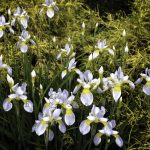 Never did I think that photography would be so demanding, at least if you wanted to take more than just a snapshot, but rather a special moment that immediately grabs and holds one’s vision. In other words, an “Ah” moment. The moment which is special and captures the essence of the vision before you.
Never did I think that photography would be so demanding, at least if you wanted to take more than just a snapshot, but rather a special moment that immediately grabs and holds one’s vision. In other words, an “Ah” moment. The moment which is special and captures the essence of the vision before you.
One truly must get into physical shape as well as visual (i.e., the art of seeing) shape and technical shape (knowing one’s tools of the trade). It has been a most deplorably wet spring here in New England this year. Instead of being outside and shooting, I have been inside and studying photography. Both are obviously needed, but being outside and shooting is more fun.
I have been preparing for my photo shoot on the Big Island of Hawaii at the end of this month, anticipating what I would need for certain situations, namely, night shooting of the Milky Way with possible inclusions of Mt. Kilauea lava flows, high contrast shots of the oceans and waves, sunrises and sunsets on ocean panoramas, rain forests and tropical gardens with shadows and probable glare, and last but not least surfers and denizens of the Hawaiian paradise. In this regard, I am bringing along rain gear for me and my camera, and a host of various filters to assist in getting the best shot. I wish I did not need to bring along my MacBook Air, simply because I like to travel light. But I guess there is a price to pay for the perfect shot(s).
The currently posted photo is of white irises around our house. They are abundant this spring and have looked the best they ever have due to the rainy spring. The photo was taken with a Canon 5DS, EF16-35mm f/2.8L USM @ 35mm, f/8.0, 1/50, ISO 100, processed with DxO Optics Pro 11, Adobe Camera Raw, using a Photoshop gradient map, and Color Efex Pro.
The Mind’s Eye
- At May 24, 2017
- By Firstmate
- In Lumenzia, Nik Software, Photographic Technique
 0
0
Over the last few weeks I’ve been preparing for my upcoming photo shoot in Hawaii in June. I’m anticipating challenging conditions both physically (heat and cold) and photographically (lighting extremes). I am less concerned about the former and more concerned about the latter. Consequently, I acquired graduated ND filters as well as standard ND filters of varying densities to deal with Hawaiian light.
Also, I discovered a wonderful product for my screw-in filters, namely Xume magnetic adaptors, which allow me to by-pass the screw-ins and simply stick the filters on magnetically. They were a little costly but, when in the field shooting, time is of the essence.
I’ve included the current blog post photo to summarize the current state of my thinking, photographically. That is, when I see a scene, I not only am seeing the scene but also I am projecting onto this scene various personal attributes (how I value certain things as colors, light, object as well emotive elements as warmth, aversion, mystery, joy, etc.). The current blog photo was taken with a Canon Powershot G2 camera many years ago. It was highly contrasted and blown out with mid-day light. Only by using some post-processing techniques was I able to salvage what my mind’s eye saw at that moment. The mind’s eye image stayed within me for years and only recently due to learning and using techniques to shape the image to conform to my mind’s eye was I able to get the image before you.
The current image was shot high above Positano, Italy, in May 2011. Post processing used Lumenzia PS Extension, a gradient map, as well as Color Efex Pro.
Creating
- At April 04, 2017
- By Firstmate
- In Canon 30D, Cape Cod, Composition, Key West, Nik Software
 0
0
The title to this post is meant to be interpreted simply, namely, describe the ad hoc or even de factor act of creating something. Naturally, it is not creating something from nothing (even in the extend sense of that word), but the act of combining elements to make a new presentation or composition of something.
In photography this is called compositing (creating a compo), and I have stayed away from this type of post-processing, simply because it is an art unto itself, and I wanted to get into the act of capturing what creation presents before my camera and lens. This was difficulty enough of a task for me.
Although recently I have relented and attempts to create a combo. You see, I loved the sky in one photograph and in another photograph I love the main element (the condor) and not the background (the sky). So, I wanted to meld the two to create a blend of the best.
The current compo in this post was created thusly: Both photos were taken with a Canon 30D and 24-105mm f/4L IS USM lens. The sky was shot off of Chatham Lighthouse Beach on Cape Cod, f/4, 1/5000, ISO 800. The condor was shot in Key West, Florida, f/14, 1/100, ISO 100. The actual compo was processed with Nik Color Efex Pro.
Luminosity Masks to the Rescue
- At March 30, 2017
- By Firstmate
- In Canon 30D, DxO Optics Pro, Key West, Lumenzia, Nik Software
 0
0
In an effort to cover my mistakes when learning the skills of photography, either through down and out errors in not attending to my camera settings for particular shots or just due to being “forced” to take the shot just to get the shot, I have been learning options in post processing with Photoshop. One particularly powerful option which attracted me for some time was luminosity masks. I tried using them in the past but it seemed a chore to use them. However, I finally developed my own action to automate the process. This was a better approach, but it still was a more than simple approach.
Then I discovered Lumenzia by Greg Benz, which is a plugin for Photoshop and is ridiculously inexpensive. In a nutshell, Lumenzia (which is actually a suite of several small programs doing more than luminosity masks) allows the user to try different luminosity masks before committing to a particular one best suited for their needs. It does have a learning curve and one has to know what one is doing, but it’s streamlined approach is such that one can grow into the program (aka plugin).
The current photograph was taken in Key West several years ago in early Spring. It was taken with a Canon 30D, 24-105mm lens (f/4) @ 55mm, f/9, 1/250, ISO 100, processed with DxO Optics Pro, Adobe Camera Raw, Lumenzia, and Color Efex Pro.


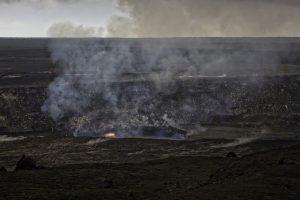
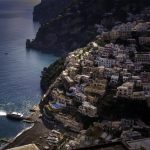
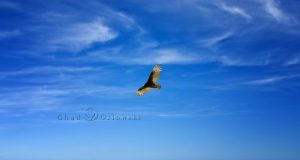
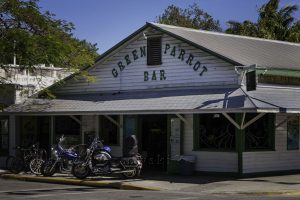
Recent Comments